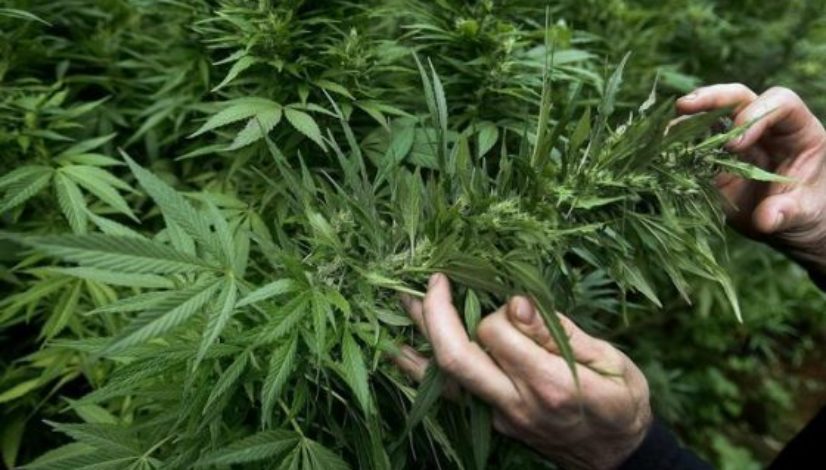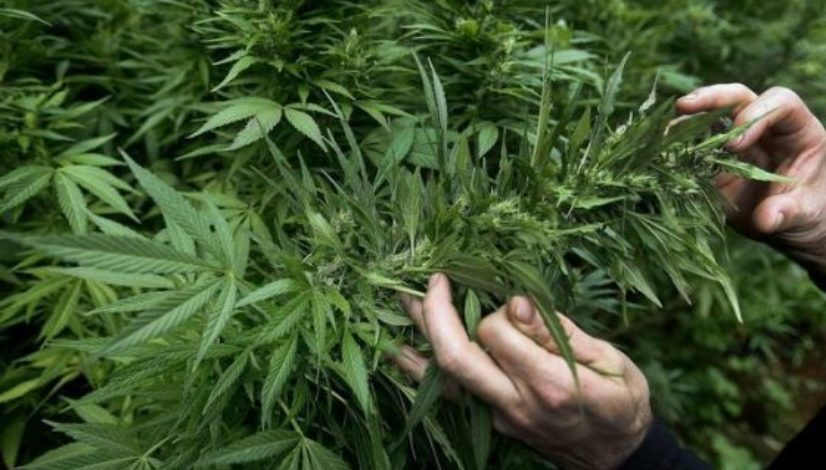I grow pot in California for a living. I’m worried about legalization.

Published: Dec 29, 2017, 4:57 pm • Updated: Dec 29, 2017, 6:00 pm
By Chiah Rodriques, Special To The Washington Post
As the daughter of a back-to-the-land homesteader and pot farmer, I learned never to speak of what my father did. We lived a simple life in times when only growing a few plants could sustain us.
“Say I am a retired schoolteacher,” he lectured. “You don’t want to have to come visit your daddy in jail, do you?”
It’s only recently that I can publicly tell stories from my childhood, of when my dad would pull me into the shade to hide from low-flying helicopters searching for cannabis patches across the hills of Mendocino County, California.
In 1976, he began supporting our family as a black-market grower, planting blackberry bushes and building platforms in the trees to shield his plants from the local marijuana eradication team. When my husband and I began growing, we used the same techniques, tunneling through the blackberries to keep our plants hidden. We now support our two kids, ages 17 and 10, in the market that took shape when California legalized medical marijuana two decades ago.
On Jan. 1, we can come into the sunlight as the Adult Use of Marijuana Act takes effect across California, legalizing recreational cannabis for adults 21 and older. Yet after waiting so long for the trophy of legalization, to finally be free in our lifestyle choice to live off the land, I can’t help but wonder: Will small farmers like me be wiped out by big business?
Yes, New Year’s will be a day of celebration for many, including tech billionaire Sean Parker, who helped bankroll the Proposition 64 campaign to end cannabis prohibition in the sixth-largest economy in the world. Recreational use is now legal in every state along the West Coast. With California poised to earn up to $1 billion in tax revenue, other states likely will follow our lead, which could spur calls for a change in federal law.
After Vietnam, many forward-thinking college graduates like my father, who’d had enough of the government and its wars, moved out to the mountains here. This was the baby-boomer generation – hippies, Deadheads and flower children who decided the mainstream way wasn’t working for them. They wanted freedom, peace and quiet.
My father bought a 40-acre piece of paradise for $5,000. He would build his own home and live on his own time, calmly raising his children off the money he made selling cannabis. When prices were $4,000 or more per pound, even the worst farmer could make a decent living off a few plants.
After harvest, my dad would take us to Baja California, Mexico, in the winter, where we would relax before returning to the mountains to start seeds and plant next year’s crop. While the farmers worked, we kids played in the forest and visited neighbors who were like family.
Related stories
- Is there such a thing as growing too much marijuana? Rhode Island thinks so
- At least 31 legal cannabis farms have been destroyed in the California fires
- Some cannabis farmers’ livelihoods could be wiped out by California fires
- How Vail Valley ranchers created a zero-carbon footprint marijuana farm
- How the War on Drugs crushed California greenhouses and cannabis legalization is bringing them back
We knew that our secret lifestyle was unique and that it was also illegal and scary at times. We had to live a sort of undercover existence that our grandparents would cringe at if they knew their grandchildren lived barefoot and dirty, homeschooled and unruly in the hills, while our parents grew, trimmed and sold cannabis.
We never imagined that the biggest threat to our lifestyle could be legalization. But the new regulations allow unlimited growing licenses, which means venture capitalists will be able to create mega-cannabis corporations. The market is already flooded with cannabis from neighboring states. We’re about to see a tsunami hit California.
In rural Mendocino County, about 40 small farmers have banded together in a collective called Mendocino Generations to try to navigate the changes. As operations director, I field texts all day from anxious growers. They are already using credit cards to cover the costs of a bad harvest, wildfire damage and compliance with local and state cannabis regulations. Members hope buyers will favor our craft cannabis over the “Walmart weed” driving down prices. But we need help from the county and the state to get there.
Proposition 64 should not repeat the mistakes that have allowed big agriculture and timber companies to wipe out American farm families in the past.
California needs to support policies that help cannabis growers of all sizes. We need tax incentives for small producers, caps on cultivation size and value-added labels for sun-grown producers.
The advantages of entering the legal market are clear. I can now freely discuss the hardships and beauties of this industry in public. A year ago, I wouldn’t even print my last name or phone number on my business cards. My father is still skeptical about talking to the press.
This is an epic turning point, and we’re proud to be a part of it. My family’s work and the story of this region are intertwined. I just hope California doesn’t leave behind the small farmers who are the backbone of this community.
Rodriques is operations director of Mendocino Generations, a collective of small marijuana farmers in Mendocino County, Calif.
Video:
Second-generation cannabis farmer Chiah Rodriques warns new regulations may sacrifice her farm to big business. (From The Washington Post)
Topics: California, California legalization, california regulations, commentary, commercial cultivation, marijuana farming, small farms




